
Last Updated 9th September, 2011

The end of the line. Station building follows the theme used at Blythburgh and Wenhaston, which Arthur Paine had previously used on the Culm Valley route in Devon. The station was extended and modified over the years.
My model has simplified the track layout somewhat, retaining the run around loop directly in front of the platform, the engine shed and three of the other sidings, one of which is extended into the return loop which rejoins the track between Southwold and the deck approximately where the carriage shed should be. In time the station building, platform, engine shed and coal yard will be added and the whole area ballasted over to sleeper top height.
The arrangement of sidings at Southwold evolved a great deal over the years. Using a map from 1904 as a guide I've used Peco G45 track on my simplified layout.

The long siding at the front and the carriage shed siding at the rear form the eastern return loop of the line.
With a 4 inch concrete footing, the raised station area was built using a mix of reclaimed and new bricks, my brick laying technique improving as I went along. Having topped the walls with solid engineering bricks, I then infilled with brick rubble topped with crushed brick. Finally a layer of aerated blocks were laid large side up to act as the track base.
Clicking on the links above will take you to the relevant section of this page.I laid out the points and track on a roll of lining paper and cut out the outline of the area. This was then taken out to the garden and the corner points marked with bamboo canes.
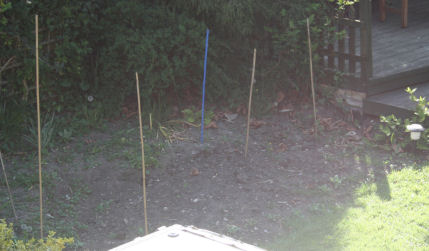
Having worked out the height of bricks required, the footings were then excavated a spade blade wide.
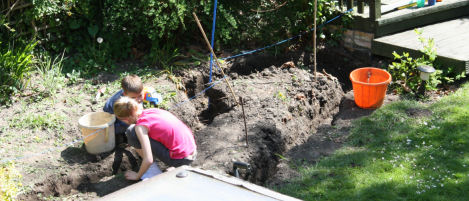
These trenches were then filled with concrete and levelled. Once hardened the brick laying commenced.
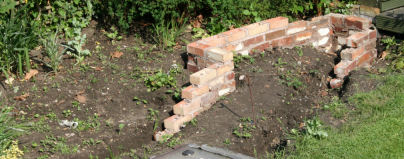
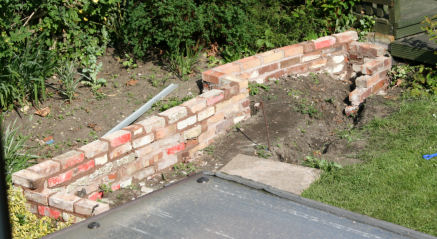
Checking for level on the final two courses and allowing for drying time, the interior of the structure was filled with brick rubble.
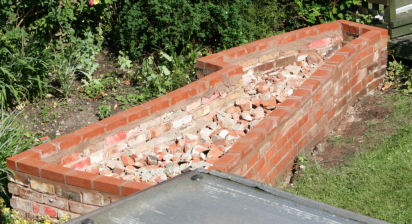
A layer of crushed brick brought the fill to the correct height, then the blocks were laid, cutting where necessary with an old panel saw. The gaps between the blocks were filled with more crushed brick.

The Peco track was laid out and cut to length where necessary. A little copper grease was added to each fish plate to give a little expansion movement. Once it all looked right I drilled a hole on the outside of one sleeper per track length and knocked a 1 inch steel nail through into the soft concrete block.
Back to the top of this section.
Back to the top of this section.
Back to the top of this section.

June 2008, it all looks a bit bare but we can at last run trains.